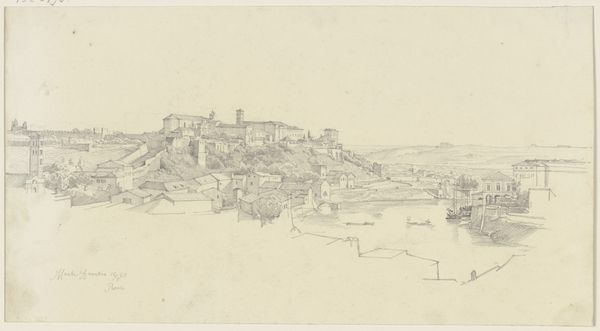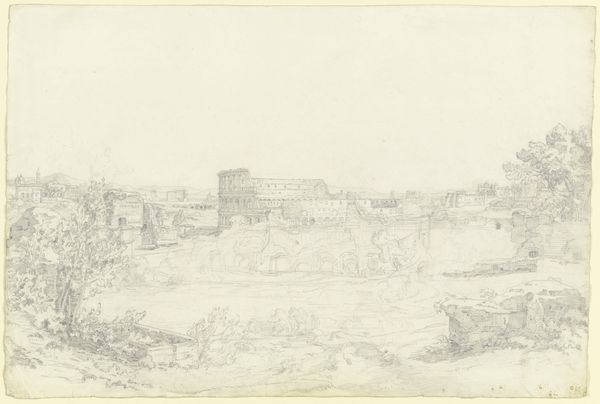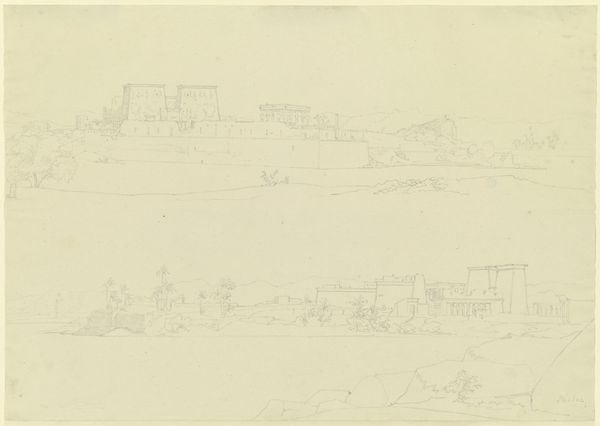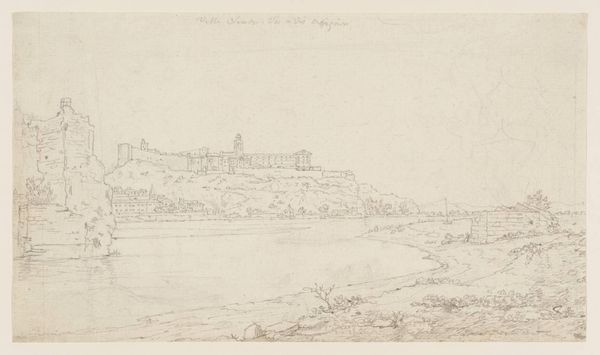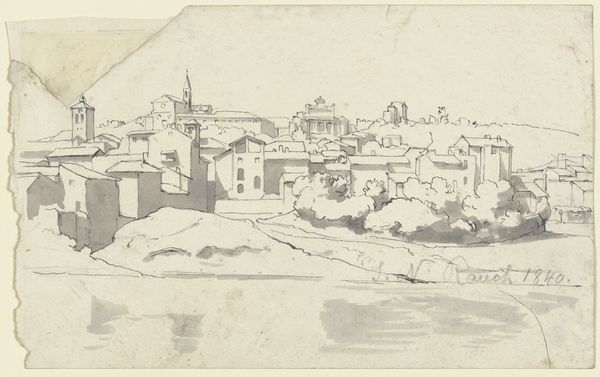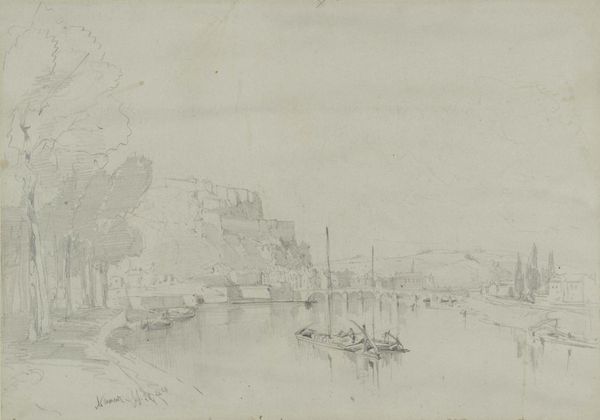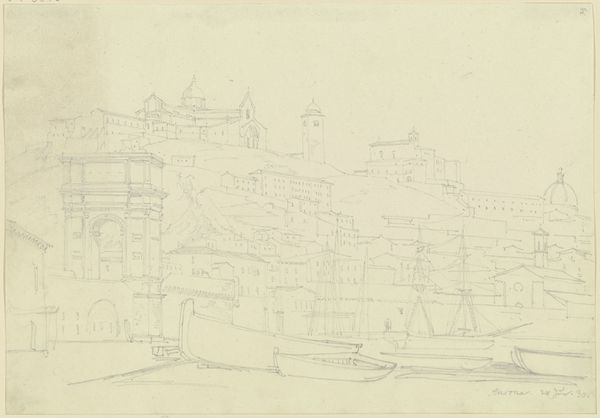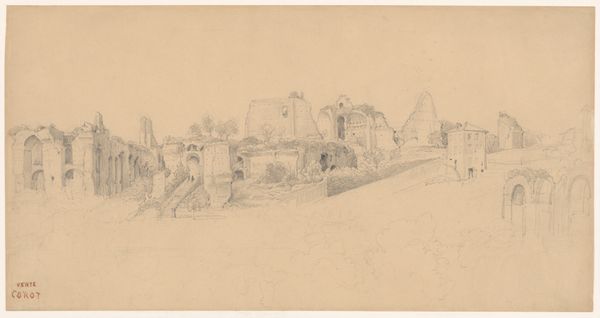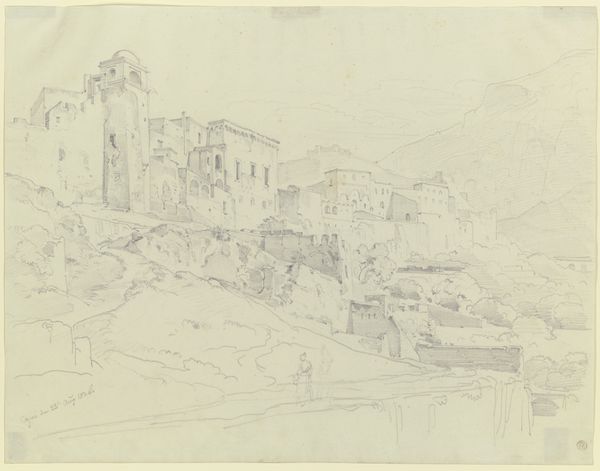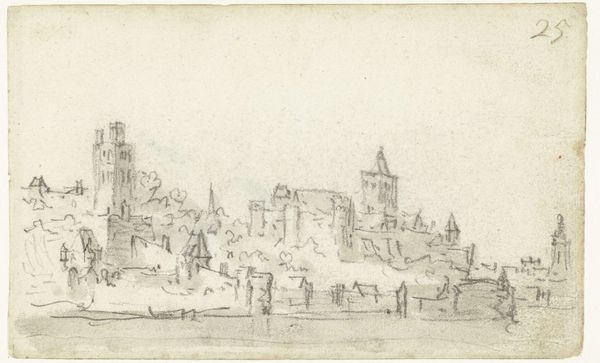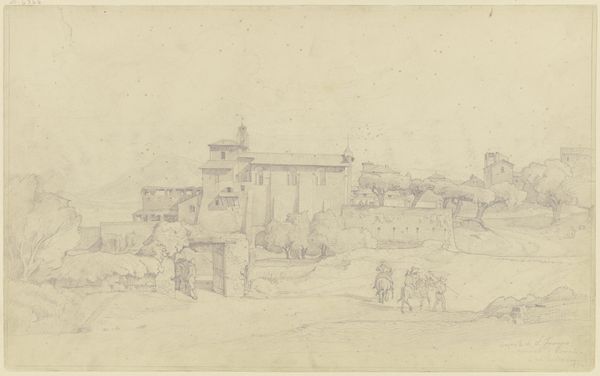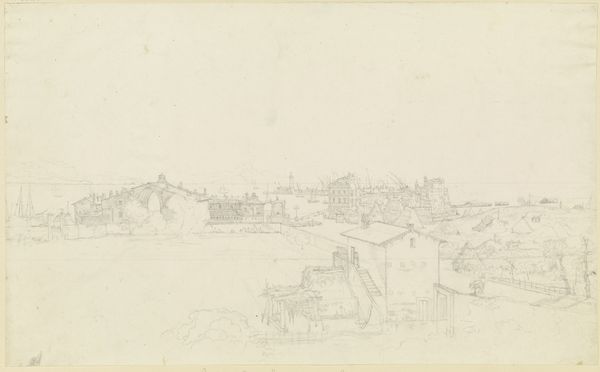
Copyright: Public Domain
Curator: Ernst Fries created this pencil drawing, titled "Castel Sant'Angelo in Rome," in 1825. Editor: The pale tones lend a quiet, almost ghostly feel. The Castel Sant'Angelo, massive yet ethereal, looms over the scene. It's interesting how the soft pencil work contrasts with the rigid architectural details. Curator: Indeed. Fries, a prominent figure of the Romantic era, was captivated by the sublime interplay between nature and architectural grandeur. He was, of course, deeply invested in notions of progress, liberty, and revolution, especially within civic structures such as those in Rome. Editor: I find myself drawn to the delicate lines creating a sense of depth. Note the subtle differences in the pencil strokes – denser in the foreground, almost disappearing in the distance, skillfully creating atmosphere. The composition directs the eye toward the castle. Curator: The Castel Sant'Angelo itself held considerable historical weight as both mausoleum and papal fortress. This transformation speaks to the complex dynamics between secular and religious power, common subjects in many artworks in the period, even subtly in a drawing like this. Its prominent placement in the work seems like an acknowledgement of the importance of architecture in Roman power structures. Editor: Agreed. And consider the small figures populating the river and its banks, mere specks compared to the imposing architecture. There's a definite sense of scale and perhaps a subtle comment on human existence within a grand historical narrative. The use of line weight is very impressive. Curator: Precisely. Furthermore, pencil drawings, widely circulated as cheaper reproductions of great artworks, democratized access to landscapes previously enjoyed only by elites. The market demand for this kind of art spoke to increasingly sophisticated engagement of the general population with art objects. Editor: It is easy to see how his strategic compositional decisions invite a contemplation of our own place within larger histories, literally situated between the imposing castle, the bridge and the quiet stream with a small rowboat, or on the riverbank on display in the drawing's foreground. Curator: A captivating perspective on how a relatively simple pencil sketch could encapsulate significant cultural and historical currents. Editor: Yes, Ernst Fries provides a space to explore the formal beauty of architecture within shifting social dynamics of 19th century Europe.
Comments
No comments
Be the first to comment and join the conversation on the ultimate creative platform.
